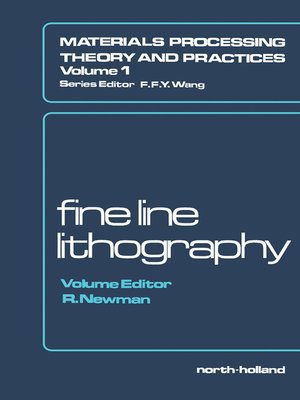Materials Processing: Theory and Practices, Volume 1
ebook ∣ Fine Line Lithography · Materials Processing: Theory and Practices
By R Newman

Sign up to save your library
With an OverDrive account, you can save your favorite libraries for at-a-glance information about availability. Find out more about OverDrive accounts.
Find this title in Libby, the library reading app by OverDrive.



Search for a digital library with this title
Title found at these libraries:
| Library Name | Distance |
|---|---|
| Loading... |
Materials Processing - Theory and Practices, Volume 1: Fine Line Lithography reviews technical information as well as the theory and practices of materials processing. It looks at very large scale integration (VLSI) technology, with emphasis on the creation of fine line patterned structures that make up the devices and interconnects of complex functional circuits. It also describes a variety of other technologies that provide finer patterns, from modified versions of optical methods to electron-optic systems, non-plus-ultra of X-ray techniques, and dry processing that uses the chemical or kinetic energies of gas molecules or ions. Organized into five chapters, this volume begins with an overview of the fundamentals of electron and X-ray lithography, with a focus on resists and the way they function, and how they are used in microfabrication. It then discusses electron scattering and its effects on resist exposure and development, electron-beam lithography equipment, X-ray lithography, and optical methods for fine line lithography. It systematically introduces the reader to electron-beam projection techniques, dry processing methods, and application of electron-beam technology to large-scale integrated circuits. Other chapters focus on contact and proximity printing, projection printing, deep-UV lithography, and shadow printing with electrons and ions. The book describes reactive plasma etching and ion beam etching before concluding with a look at factors affecting the performance of the scanning-probe type of systems. This book is a valuable resource for materials engineers and processing engineers, as well as those in the academics and industry.







